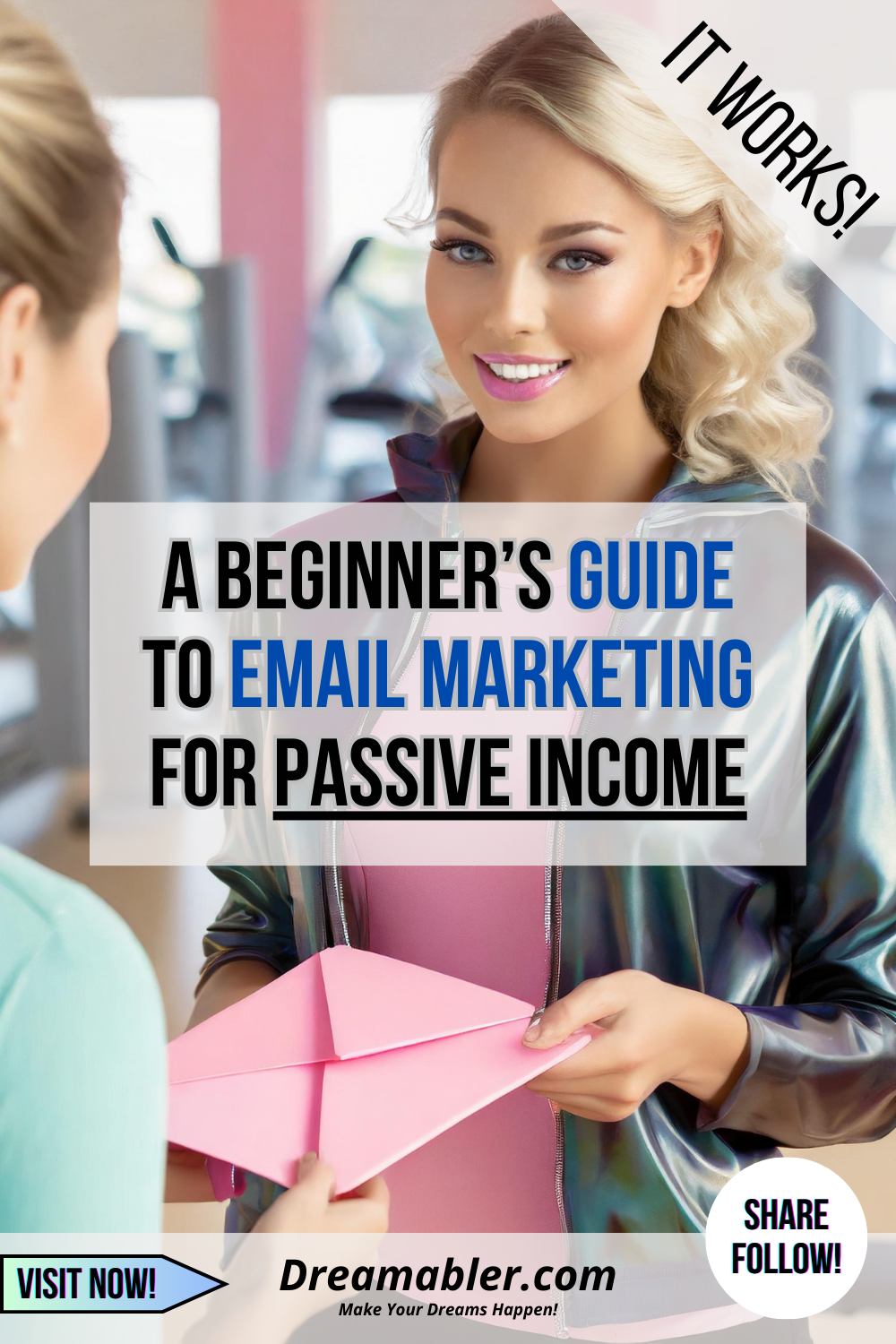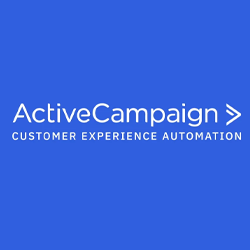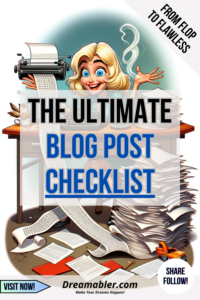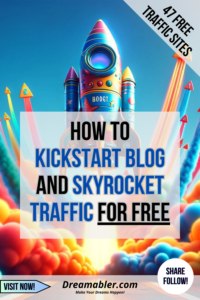Last Updated on February 7, 2024 by Mika
TL;DR: "A Beginner’s Guide to Email Marketing for Passive Income" demystifies email marketing, showcasing it as a potent tool for building passive income streams. It highlights the significance of personalization, the expansive user base of email, and its unmatched engagement rates compared to social media. With an impressive ROI, email marketing stands out for its cost-effectiveness and efficiency. The guide covers the basics of email marketing, from list building and crafting engaging content to analyzing performance for continuous improvement. It positions email marketing as an accessible strategy for anyone looking to monetize their ideas and connect with an audience on a personal level.
Let’s squash a myth right off the bat: Email marketing? Isn’t that a bit… ancient? Hold that thought! The reality is that email marketing works like a well-oiled machine when done correctly.
And it’s like a gold mine, just for your motivation, here are some quick facts about email marketing.
- Personalization at Its Best: According to Forbes, email marketing remains highly relevant as it allows for unparalleled personalization, setting it apart from social media channels.
- Expansive User Base: Disregard the myths; the reality is staggering. Statista reports that from 3.9 billion email users in 2019, the figure is projected to climb to 4.48 billion by 2024, nearly mirroring Asia’s population and representing a significant chunk of the global populace.
- Unmatched Engagement: When it comes to engagement, email is king. OptinMonster highlights that while social media platforms like Facebook, Twitter, and Instagram have an average engagement rate of just 0.58%, email boasts an impressive average open rate of 22.86% and a click-through rate (CTR) of 3.71% across various industries.
- Impressive ROI: Email marketing is not just about wide reach and personalization; it’s also incredibly cost-effective. According to the Data & Marketing Association, email marketing offers an astounding average return on investment (ROI) of $42 for every $1 spent. This remarkable efficiency makes it one of the most lucrative channels for marketers, underscoring its value in a comprehensive digital marketing strategy.
These insights underscore the enduring power and potential of email marketing as a tool for effective and personalized communication.
So, are you ready to dive into the world of “digital gold mining” with my beginner’s guide to email marketing for passive income?
Now, you might be thinking, “What exactly is email marketing, and how can generate passive income?”
It’s simple: You’re crafting engaging, personalized messages that land directly in someone’s inbox, and your messages get not only opened but also read – because you have a working relationship with your list.
It’s all about building relationships and offering value. When done right, this strategy can turn your email list into a steady stream of income, almost like a magic beanstalk growing cash! That happens because you deliver value, your subscribers trust you and of course, you recommend from time to time your products and affiliate products, etc., and that is what brings in cash.
But here’s the kicker – it’s not just for the pros. Beginners, you’ve got a seat at this table too. Email marketing is a skill you can master, and I’m here to walk you through it. From list-building tips to crafting the perfect mail marketing plan, we’ve got you covered.
And for those eager beavers out there, we’ll even delve into how to build your email list fast. So, buckle up and get ready to transform your email into a money-making machine!
Understanding the Basics of Email Marketing
Email marketing is like your trusty Swiss Army knife in the digital marketing toolkit. It’s all about sending those curated, engaging emails to a group of people who genuinely want to hear from you. But it’s more than just hitting ‘send’. It’s about building connections, offering value, and, of course, opening up streams for passive income.
Let’s break it down. The core components? They’re like the three musketeers of email marketing:
- List building
- Stellar email content
- Sharp-eyed analytics.
First up, list building. It’s not just gathering emails; it’s about attracting the right crowd. Think of it as your fan club, where every member signed up because they’re into what you’ve got to offer.
Next, the star of the show: email content. This isn’t just words and pictures; it’s your voice, your brand, speaking directly to your audience. It’s about crafting messages that resonate, inform, and occasionally persuade. Your emails need to sing in a crowded inbox!
And then, there’s analytics. This is where the detective work happens. Tracking opens, clicks, and conversions – it’s all about understanding what works and tweaking what doesn’t. It’s like having a crystal ball, showing you the magic behind each campaign.
Here’s a fun fact: email marketing has been around since the dawn of the internet, and it’s still a go-to strategy for the biggest names in business. Why? Because it works! And the best part? You don’t need to be a corporate giant to get in on the action.
Whether you’re a budding entrepreneur, a side hustler, or just curious, email marketing is a tool that’s accessible to everyone. It’s about turning your ideas into income, one email at a time. So, why wait? Let’s get your email marketing journey started! 💌
Setting Up Your Email Marketing Platform
Choosing the right email marketing service is like picking the perfect ally for your online adventure. They will be a fundamental part of your success, so it’s important to make the choice that’s a perfect fit for you.
I’ve tested almost all email marketing services, and I can strongly recommend only one. Read the review why.
Anyway, you should pick one major provider such as MailChimp, ConvertKit, or Brevo. Each offers unique features, but what you need is user-friendliness, robust analytics, seamless automation, and perfect delivery of your emails. In that case, the choice is clear: ActiveCampaign.
Ready to set up your account? Let’s roll!
- Sign Up and Choose a Plan: Start by visiting the website of your chosen service. Look for a plan that aligns with your current needs – many offer free starter plans, perfect for beginners.
- Creating Your Email List: Once you’re in, it’s time to build your list. Navigate to the ‘Lists’ or ‘Audience’ section. Click on ‘Create List’ or a similar button. Fill in the details: list name, your email address (as the sender), and a short reminder for subscribers about why they’re receiving emails from you.
- Import Contacts (If Any): Got pre-existing contacts? Import them here. Make sure they’ve given consent to be on your list – consent is king in email marketing!
- Setting Up a Sign-Up Form: Go to the form builder section. Create a sign-up form to embed on your website or share on social media. Keep it simple yet inviting – name and email address fields are often enough.
- Designing Your Email Template: Head over to the template section. Most platforms offer customizable templates. Keep your design clean and mobile-friendly. Use your brand colors and logo to make it distinctly yours. Remember, your email is like a virtual handshake – it should feel welcoming and professional.
- Testing Your Setup: Before going live, send a test email to yourself. Check how it looks on different devices and tweak it as needed.
Your email marketing platform is more than a tool; it’s the gateway to your audience. Take your time to understand its features. A well-set-up platform is like a well-tuned instrument – it’ll make your marketing melody resonate louder and clearer! 🚀
Building Your Email List
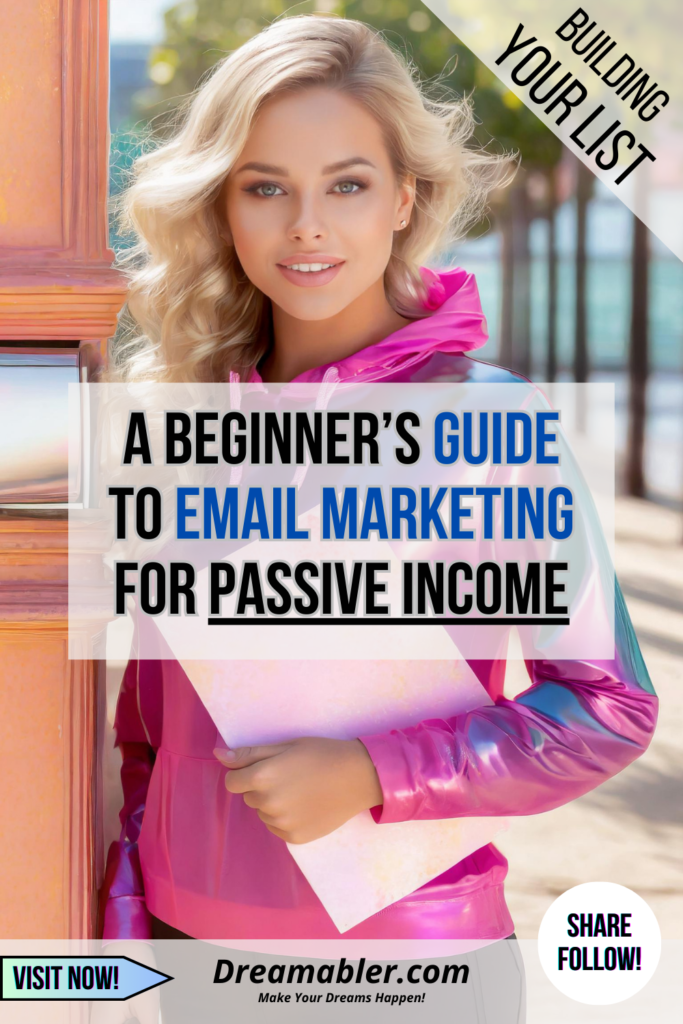
Building your email list is like planting a garden – it requires care, strategy, and a bit of patience. Here’s how to cultivate a flourishing list:
Opt-In Forms on Your Website/Blog
Starting to build your email list is very simple! Place opt-in forms strategically on your site. Whether it’s a sidebar, at the end of a blog post, or a popup, make sure it’s visible without being intrusive. The key? An enticing call-to-action (CTA) that encourages visitors to subscribe.
Have a look around Dreamabler.com. You will find my email subscription form on almost every page, from various locations, but it is never intrusive.
My idea is to give my visitors so many possibilities to subscribe, that they just can’t resist! However, as you can see I do it not intrusive way. For example, I don’t use pop-ups at all as I quite much hate those myself.
Lead Magnets
Think of lead magnets as the honey to your bee-like audience. They are free, valuable resources offered in exchange for email addresses.
This could be a digital product, an exclusive eBook, or a helpful guide.
Tools like Sqribble can help you whip up an eBook in minutes. Lead magnets not only boost your list but also establish your expertise.
Social Media Promotion
Social media stands as a vibrant and diverse playground for email list building. With so many platforms at your fingertips, each offering its unique flavor, the possibilities for expanding your reach and growing your list are nearly endless.
Whether it’s the visually rich Instagram, the conversational nature of Twitter, or the professional network of LinkedIn, there’s a platform that aligns perfectly with every niche and audience.
The general strategy for using these platforms for list building revolves around driving traffic to your lead magnet. This can be a well-crafted eBook, an informative webinar, or any valuable resource that entices users to exchange their email for your offering.
The key is to create content that resonates with your audience, encourages engagement, and directs them to your sign-up page.
While paid ads are certainly an option for promoting your lead magnet, the focus here is on leveraging free traffic. This can be achieved through regular posting, engaging with your followers, using targeted hashtags, and sharing snippets of your lead magnet that pique interest.
It’s about creating a buzz around your content and building a community that’s eager to hear more from you. The power of social media lies in its ability to connect and engage. Use it wisely, and watch your email list flourish organically.
Pros and Cons for Email List Building
- Pros:
- Wide Audience: Facebook’s vast user base offers access to a diverse demographic, increasing the potential for a broad reach.
- Advanced Targeting: With sophisticated ad targeting options, you can pinpoint your ideal audience, making your list-building efforts more efficient.
- Cons:
- Declining Organic Reach: Organic reach on Facebook has declined, meaning you may need to rely more on paid ads to get visible.
- Competitive Space: Due to its popularity, standing out and capturing attention on Facebook can be challenging.
Demographics & Suitable Niches: Facebook has a wide demographic range, though it’s particularly popular among adults aged 25-34. It’s a versatile platform suitable for a variety of niches, especially lifestyle, health and wellness, and consumer goods.
Pros and Cons for Email List Building
- Pros:
- High Engagement: Instagram is known for its high engagement rates, which can be leveraged to build a more engaged email list.
- Visual Appeal: The platform’s focus on visuals makes it ideal for showcasing products and services in an attractive manner.
- Cons:
- Link Limitations: Instagram limits the use of clickable links to the bio section, making direct list-building slightly more challenging.
- Younger Audience Focus: If your target demographic is older, Instagram might not be as effective.
Demographics & Suitable Niches: Instagram’s primary user base is younger adults, with a strong presence of users aged 18-29. It’s ideal for niches like fashion, beauty, travel, and food.
Pros and Cons for Email List Building
- Pros:
- Real-time Interaction: Twitter’s real-time nature allows for instant engagement with followers, helping to quickly drive traffic to sign-up pages.
- Hashtag Reach: Using targeted hashtags can increase visibility beyond your current followers.
- Cons:
- Limited Character Count: The brevity of tweets can make it difficult to convey compelling messages to subscribe.
- Fast-Paced Environment: Tweets have a short lifespan, so your message may be quickly buried under newer content.
Demographics & Suitable Niches: Twitter is popular among adults aged 18-29 and is well-suited for news, entertainment, technology, and political niches.
Pros and Cons for Email List Building
- Pros:
- Professional Audience: LinkedIn is ideal for B2B list building, connecting you with professionals and industry leaders.
- Content-Driven Platform: High-quality, informative content on LinkedIn can attract a more niche, engaged audience.
- Cons:
- Less Casual Engagement: The professional nature of the platform may not be ideal for more casual or lifestyle-oriented niches.
- Slower Growth: Building a list on LinkedIn can be a slower process compared to more casual social networks.
Demographics & Suitable Niches: LinkedIn is predominantly used by professionals aged 25-49. It’s best suited for B2B, education, and career-oriented niches.
Pros and Cons for Email List Building
- Pros:
- High Purchase Intent: Users often come to Pinterest with the intent to find and save ideas, which can translate into higher conversion rates.
- Longer Content Lifespan: Pins tend to have a longer shelf life compared to content on other social platforms.
- Cons:
- Niche-Specific: Pinterest is more effective for certain niches, and may not work well for all types of content.
- Passive Interaction: Users are often more in “browsing mode”, which can lead to less direct interaction with brands and creators.
Demographics & Suitable Niches: Pinterest’s user base skews predominantly female, particularly in the 30-49 age range. It’s highly effective for niches like DIY, home decor, fashion, food, and travel.
YouTube
Pros and Cons for Email List Building
- Pros:
- Video Content Engagement: YouTube’s video format can create a deeper connection with the audience, enhancing trust and loyalty.
- Global Reach: As the second largest search engine, YouTube offers immense potential for global audience reach.
- Cons:
- Content Creation Investment: Producing high-quality video content consistently requires significant time and resources.
- Competitive Platform: Standing out among millions of content creators can be challenging.
Demographics & Suitable Niches: YouTube has a broad demographic reach, with a particularly strong presence among 18-34 year-olds. It’s versatile for almost any niche but excels in entertainment, educational content, lifestyle, and how-to guides.
Snapchat
Pros and Cons for Email List Building
- Pros:
- Youthful Audience: Snapchat is a go-to platform for engaging with a younger demographic, particularly those aged 13-24.
- Interactive Content: The platform’s features encourage interactive and creative content sharing.
- Cons:
- Ephemeral Content: The temporary nature of Snapchat content can make it hard to convey lasting messages for email list building.
- Limited Analytics: Compared to other platforms, Snapchat offers fewer analytics tools to measure engagement and conversion.
Demographics & Suitable Niches: Snapchat is heavily used by teens and young adults, making it ideal for niches like fashion, entertainment, gaming, and beauty.
TikTok
Pros and Cons for Email List Building
- Pros:
- Viral Potential: TikTok’s algorithm can rapidly amplify content reach, offering a chance for rapid list growth.
- High User Engagement: The platform is known for its highly engaging user base, which can lead to quick interactions and conversions.
- Cons:
- Unpredictable Trends: The fast-changing nature of TikTok trends can make sustained list-building efforts challenging.
- Younger Demographic Focus: While growing, the platform is still predominantly used by younger audiences, which may not suit all niches.
Demographics & Suitable Niches: TikTok’s core audience includes teenagers and young adults, making it perfect for niches like entertainment, lifestyle, fashion, and beauty.
Ready To Start?
Building a targeted and engaged list is crucial. You want subscribers who are genuinely interested in what you offer, as they’re more likely to engage and convert. Quality trumps quantity. Here’s a recap of what you can do at each platform:
- Regularly post about your lead magnet
- Share snippets of your content.
- Direct followers to your sign-up form.
- Remember, consistency is key.
Each social media platform offers unique opportunities and challenges for email list building. Understanding the specific demographics and niches best suited for each can help tailor your strategy for optimal results. 🌐
Do’s and Don’ts of Email List Building

Building an email list through social media is a blend of art and science. To master this craft, it’s crucial to understand the do’s and don’ts that can make or break your efforts. Here’s a comprehensive guide to navigating these waters.
Do’s
- Provide Value in Every Post: Your social media content should be more than just an advertisement for your email list. Offer insights, tips, and valuable information that stand on their own merit. This builds trust and positions you as a knowledgeable source in your field.
- Use Engaging Visuals and Copy: Social media is a visually-driven platform. Use high-quality images, eye-catching graphics, and compelling copy to grab attention and drive engagement.
- Leverage Lead Magnets: Offer something irresistible like a free ebook, a discount code, or an exclusive video in exchange for email sign-ups. Make sure your lead magnet is directly relevant to your audience’s interests and needs.
- Optimize Your Bio: Utilize your social media bio to include a call-to-action (CTA) and a link to your sign-up form. It’s prime real estate – make it count!
- Engage with Your Audience: Respond to comments, participate in discussions, and create interactive content like polls or Q&A sessions. Engagement fosters community and drives interest in your offerings.
- Track and Analyze Your Efforts: Use social media analytics tools to understand what’s working and what’s not. This data-driven approach allows you to refine your strategy for better results.
Don’ts
- Don’t Spam Your Followers: Constantly bombarding your audience with requests to sign up for your list can be off-putting. Maintain a balanced mix of content types.
- Avoid Buying Followers or Lists: This unethical practice not only harms your credibility but also violates the terms of most social media platforms and email marketing services.
- Don’t Ignore the Platform’s Culture: Each social media platform has its own etiquette and style. What works on LinkedIn might not fly on TikTok. Tailor your approach accordingly.
- Don’t Overlook Mobile Optimization: Most social media browsing happens on mobile devices. Ensure that your sign-up pages and lead magnets are mobile-friendly.
- Avoid Being Overly Promotional: While your ultimate goal is to build your list, focus on creating genuine connections and providing value first.
- Don’t Neglect GDPR and Other Regulations: Be compliant with data protection and privacy laws. Always obtain explicit consent before adding someone to your list.
By adhering to these do’s and don’ts, you can effectively harness the power of social media for building a robust and engaged email list. Remember, it’s about building relationships, not just a subscriber count. Happy list building!
Your email list is a community waiting to be engaged, nurtured, and grown. Treat it with respect and watch it thrive.
Creating Engaging and Effective Email Content
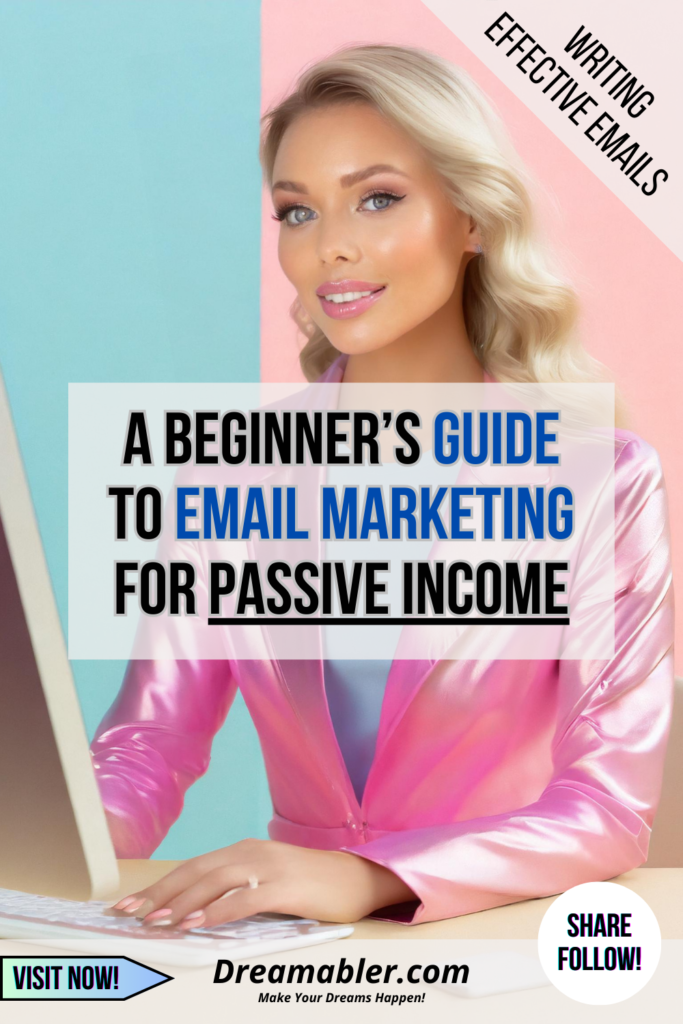
Creating content for your email marketing campaign is akin to crafting a personal letter to a friend.
It’s about understanding your audience and tailoring your message to their interests and needs.
When you’re aware of what your subscribers find engaging, you can create content that resonates deeply with them.
Understanding Your Audience
Getting to know your audience is the first critical step. This insight can come from:
- Conducting surveys or feedback forms to directly ask what interests your subscribers.
- Analyzing data from previous emails to see what topics and styles got the most engagement.
With this information, you can tailor your emails to match the interests and needs of your audience, making each message feel personal and relevant.
Types of Emails for Passive Income
Several types of emails can be effective in generating passive income:
- Newsletters: Share insights, updates, and stories. They are great for keeping your audience engaged and building a community around your brand.
- Promotional Emails: Highlight products, services, or offers. These are direct but should be used sparingly to avoid overwhelming your subscribers.
- Automated Sequences: Triggered by specific actions such as signing up or making a purchase. These are efficient in maintaining engagement over time.
Writing Compelling Content
The art of writing engaging email content lies in its ability to captivate the reader from the start.
Creating content that captivates and retains your audience’s attention involves:
- Crafting Intriguing Subject Lines: Your subject line is your first, and sometimes only, chance to grab attention. Make it count.
- Personalizing Your Message: Use your subscriber’s name and reference their interests to make your emails feel more like a one-on-one conversation.
- Keeping It Clear and Concise: Respect your readers’ time by getting to the point quickly and efficiently.
- Using Strong Calls-to-Action (CTAs): Guide your readers on what action to take next. Make your CTAs clear and compelling.
- Incorporating Visuals: Break up the text and add interest with relevant images or graphics.
- Being Consistently Unpredictable: While maintaining a regular emailing schedule, keep the content fresh to avoid predictability.
- Proofreading: Typos and grammatical errors can detract from your professionalism and the effectiveness of your message.
Never Use Readymade email from Merchants
It’s common for product creators and merchants to offer their affiliates pre-written email templates, known as email swipes, as a resource.
However, a prevalent issue among affiliate marketers is the habit of using these templates when communicating with their subscribers.
A frequent oversight in this process is the failure to personalize these emails fully. It’s not uncommon to find placeholders like {firstname_fix} still present in the email’s greeting, a clear sign of minimal effort in customization.
Consider the possibility that your subscribers are also part of other mailing lists. If these other marketers, or even the product creators themselves, are sending out identical emails, your subscribers are likely receiving duplicate content.
This redundancy can lead your emails to be perceived as spam, quickly relegated to the “JUNK” folder.
The intention behind these ready-made email swipes is to serve as a starting point, a source of inspiration. They are meant to be adapted and personalized to fit your unique voice and the specific needs of your audience.
Your subscribers have grown accustomed to a certain style and tone in your communications; it’s this personal touch that fosters a connection with them. Preserve this connection by infusing your personality into every email, ensuring it resonates with your distinctive style.
Engaging and effective email content is a blend of understanding your audience, delivering value through various types of emails, and crafting content that is both personal and professionally executed. Focusing on these elements, you can turn your email marketing efforts into a powerful tool for building connections and driving passive income.
Crafting an Effective Email Funnel for Sales
An email funnel is a strategic way to guide your audience from initial interest to the final purchase. It’s like a well-plotted journey, each email a step along the path leading to the ultimate goal: making a sale.
Here’s a breakdown of the types of emails that form an effective sales funnel:
- Thank You Email: This is your first point of contact after a subscriber opts in for your freebie. Thank them and set the tone for your upcoming communications.
- Nurture Email Sequence (3-4 Emails): These emails should provide mini-tips or insights related to your niche. They’re not about selling; they’re about building a relationship and establishing your expertise.
- Personal Story Email: Share a story about your experience or journey in the niche. This humanizes your brand and creates a deeper connection.
- Link to High-Performing Content: Direct them to top content on your blog. This showcases your value and drives traffic to your site.
- Announcement Email: Introduce your eBook or affiliate offer. Highlight its features and benefits, making it clear why it’s a must-have.
- “Did You See It?” Email: A gentle nudge to ensure your subscribers are aware of the offer. It’s easy for emails to get lost in a busy inbox.
- Case Study Email: Share success stories or case studies of people who’ve benefited from your eBook or affiliate product. Real-life examples are persuasive.
- Testimonial Email: Positive reviews from others build credibility and trust in your product.
- Limited Discount Alert: Create a sense of urgency with a limited-time discount offer. This can nudge hesitant buyers towards a purchase.
- Final Call for Discount: Remind them that the discount window is closing. It’s a last chance to grab the offer at a reduced price.
- End of Sale Email: Let them know that the sale is ending. This is your final push, emphasizing the missed opportunity if they don’t act now.
Each of these emails plays a crucial role in guiding your potential buyers toward making a positive decision. The key is to maintain a balance between providing valuable content and making persuasive offers.
Your email funnel should feel like a natural conversation, gradually building up to the sale, rather than an aggressive sales pitch.
By strategically structuring your emails and focusing on the needs and interests of your subscribers, you can effectively lead them toward saying “YES” to your products or services.
A well-crafted email funnel isn’t just about selling; it’s about creating an experience that makes your audience feel informed, valued, and ready to take action. 🛒
Automation and Scheduling
A key player in your strategy should be email automation. It’s like having a personal assistant who takes care of sending emails at just the right time, ensuring your audience remains engaged without you constantly being at your computer.
Imagine setting up a system that works tirelessly in the background, nurturing your leads and contributing to your passive income goals. That’s the beauty of automation in email marketing.
Email Automation: Your Silent Partner in Passive Income
Email automation is a game-changer for generating passive income. After all, the income is not passive if it requires a lot of constant work!
Automation allows you to schedule emails in advance, send out timely responses, and maintain consistent communication with your audience, all of which are essential in building trust and boosting conversions.
Plus, it saves you a ton of time, which you can invest in other income-generating activities.
Setting Up Automated Email Sequences
To get started, choose an email marketing platform that offers robust automation features. Then, create a series of emails tailored to different stages of the customer journey.
For instance, a welcome series for new subscribers, followed by regular updates, and occasional promotional content.
Automation ensures each subscriber receives the right message at the right time, enhancing their experience and your chances of success.
Best Practices for Scheduling Emails
Timing is everything. Experiment with different days and times to see when your emails get the best open and click-through rates.
The goal is to be in sync with your audience’s schedule. Regular communication is key, but don’t bombard them. Strike a balance between being present in their inbox and giving them space.
For example, I send a Happy Mondays Newsletter every Monday. My audience knows I don’t spam them and most readers wait for it, they know it drops into their inbox every Monday morning! However, Monday might not be the best day to send out, but I have chosen it because I want to get energy flowing right on Mondays for the new week! And I want to give new ideas & make Mondays happy again.
Email automation and effective scheduling are pivotal in crafting a successful beginner’s guide to email marketing for passive income. They are the gears that keep your email marketing engine running smoothly, helping you nurture leads and build a loyal audience while freeing up your time to focus on other aspects of your online business.
So, set up your automated sequences, schedule your emails wisely, and watch your email marketing efforts contribute significantly to your passive income journey.
Monetizing Your Email List

Monetizing Your Email List: More Than Just Selling
Once you have an engaged email list, monetization becomes a viable path to generating passive income. But keep in mind that it’s not just about selling; it’s about offering value in a way that feels natural and beneficial to your subscribers. Or you risk losing trust and subscribers.
Here are a few ways to monetize your list from the moment you have the first subscriber:
- Affiliate Marketing: This involves promoting other people’s products and earning a commission for every sale made through your unique affiliate link. It’s key to choose products that align well with your audience’s interests and needs. Ensure you genuinely believe in the products you’re promoting – your subscribers trust your recommendations.
- Selling Your Products/Services: If you have your products or services, your email list is a gold mine. Be it digital products like e-books or courses, or physical goods, your subscribers are your primary market. Tailor your offers to meet their needs and preferences.
- Sponsored Content: Partnering with brands for sponsored content can be lucrative. This could be a dedicated email about a brand’s product or service. However, it’s crucial to partner with brands that resonate with your audience and maintain your voice and authenticity in any sponsored content.
Expanding Your Horizons in Monetizing
Expanding your horizons in monetizing your email list can open up even more avenues for passive income.
- Consider offering exclusive memberships or subscriptions that provide premium content, special deals, or unique services. This model capitalizes on the exclusivity factor, catering to subscribers who are willing to pay for added value.
- You can host webinars or online workshops related to your niche. Charge a fee for attendance or offer it for free but upsell additional products or services during the event. This approach not only monetizes your list directly but also enhances your authority and deepens the relationship with your audience.
By diversifying your monetization, you can maximize the potential of your email list, turning it into a dynamic tool for revenue generation. 📈
Balancing Promotional and Value-Added Content
As I have said multiple times already, the secret sauce in email marketing is the balance between promotional content and value-added information. I said it once more as it’s so crucial for success.
Nobody likes an inbox full of only sales pitches. It’s vital to mix educational, entertaining, or informative content that provides value to your subscribers.
This could be tips, insights, personal stories, or industry news – anything that enriches their lives or solves a problem. This approach not only keeps your audience engaged but also builds trust, which is essential for when you do promote or sell something.
Ethical Considerations and Transparency
Transparency and ethics are non-negotiable in monetizing your email list. Always be upfront about what your emails contain. If you’re sending affiliate links or sponsored content, disclose this information.
It’s not just about adhering to legal requirements; it’s about maintaining the trust and respect of your audience. They’ll appreciate your honesty and are more likely to engage with your recommendations.
Monetizing your email list is a blend of strategy and integrity. By providing genuine value, maintaining a balance in your content, and being transparent in your promotions, you can effectively monetize your list while respecting and nurturing the relationship with your subscribers. Remember, in the realm of email marketing, trust is your most valuable asset.
Analyzing and Improving Your Email Marketing Efforts
Grasping Key Metrics
Understanding and analyzing key metrics is crucial. These metrics are indicators of your campaign’s health and effectiveness:
- Open Rates: This tells you how many people are opening your emails. A low open rate could indicate issues with your subject lines or email timing.
- Click-Through Rates (CTR): This shows the percentage of readers who clicked on a link within your email. It’s a direct measure of how engaging your content and call-to-action are.
- Conversion Rates: This is the percentage of subscribers who take the desired action after clicking a link in your email. High conversion rates mean your email content aligns well with your audience’s interests and your overall campaign goals.
Tools and Techniques for Tracking
To effectively track these metrics, utilize tools offered by your email marketing platform. Most services provide detailed analytics dashboards that display these metrics for each campaign.
Additionally, consider integrating your email platform with a web analytics (such as Google Analytics) tool for a more comprehensive view of how your email traffic behaves on your website.
Strategies for Testing and Optimizing
Optimizing your email campaigns is a continuous process. Implement these strategies:
- A/B Testing: Also known as split testing, this involves sending two slightly different versions of an email to a small segment of your list to see which performs better. You can test elements like subject lines, email content, or call-to-actions.
- Segmentation: Tailor your emails based on subscriber data such as demographics, past purchase behavior, or engagement level. Segmentation can lead to more personalized and effective campaigns.
- Regular Updates and Tweaks: Based on the insights from your metrics and tests, continually refine your email content, design, and sending schedule. Stay adaptive and responsive to your audience’s preferences.
By consistently analyzing your metrics and employing strategic testing and optimization, you can significantly enhance the effectiveness of your email marketing efforts.
This ongoing process of refinement is key to building successful campaigns that resonate with your audience and drive your passive income goals. 📊
Advanced Tips and Strategies
Segmenting Your Email List for Targeted Campaigns
Segmentation is the secret weapon for boosting the efficacy of your email campaigns. By dividing your email list into smaller, more focused groups based on criteria like demographics, purchase history, or engagement level, you can deliver more relevant and personalized content.
This targeted approach often results in higher open and click-through rates, as well as increased conversion.
Personalization and Advanced Automation Techniques
Personalization goes beyond addressing subscribers by their first names. Use data-driven insights to tailor content that resonates with each segment.
Advanced automation techniques can be employed here – for example, setting up trigger-based emails that respond to specific actions of your subscribers, like sending a birthday discount or a special offer on the anniversary of their subscription.
Exploring Advanced Monetization Strategies and Partnerships
To take monetization up a notch, consider exploring partnerships with complementary brands or businesses. This could involve co-creating content, cross-promoting products, or engaging in affiliate partnerships that offer mutual benefits.
Additionally, explore the development of tiered membership models or premium content offerings for subscribers willing to pay a bit extra for exclusive content or benefits.
By implementing these advanced strategies, you can refine the precision of your email campaigns, foster deeper engagement, and unlock new monetization opportunities.
Consider also integrating your email platform with a web analytics (such as Google Analytics) tool for a more comprehensive view of how your email traffic behaves on your website.
These approaches require a bit more effort and understanding of your audience, but the payoff can be significantly higher, both in terms of engagement and revenue generation. 🎯
Start Building Your List Now!

The importance of email marketing as a tool for generating passive income cannot be overstated. It’s a powerful way to connect directly with your audience, offering them value while also opening avenues for monetization.
Whether it’s through affiliate marketing, selling your products, or engaging in sponsored content, email marketing provides a platform to grow and diversify your income streams.
Starting to build your email list today is an investment in your future. Over time, this list will evolve into your most valuable digital asset. As it grows, so does your potential to reach more people, create deeper connections, and increase your passive income. Subscribers are not just numbers; they’re a doorway to new opportunities and possibilities.
I encourage you to start this journey today.
Begin building that list and watch as it transforms into a cornerstone of your online presence. And don’t forget to subscribe and follow for more insights and tips on making money online.
Kickstart List Building With Actionable Course
I fully understand that it might seem like a daunting task to set up everything – creating a lead magnet, gathering free or paid traffic, writing a series of emails, and setting up automation.
However, trust me, doing this is one of the best decisions you have made. If you start now, your list will grow and become your most valuable digital asset, driving in, thanks to automation, real passive income like a well-oiled machine.
Ultimately, it’s not as hard as it seems; it just takes a bit of time and focus. If you wish to kickstart with a hands-on approach through an actionable course, I recommend watching the course below. It walks you through the entire process of setting up an email list-building machine from start to success.
COURSERA
- Earn hundreds per month.
- No upfront costs.
- Fast, simple and easy.
If you found this guide helpful, please share it with others who might benefit from it. Sharing knowledge is a powerful way to help others grow and succeed in their digital marketing endeavors. Let’s spread the word and help each other thrive!
Stay On The Course!
Don’t miss out on your next big opportunity in the dynamic world of email marketing and passive income. Make sure to subscribe to my newsletter and follow for a steady stream of insights, tips, and tricks.
The landscape of online marketing is constantly evolving, filled with endless possibilities for those ready to dive in.
Share your thoughts, questions, and experiences and comment below – together, we’ll navigate these exciting waters and reach new heights. Ready to transform your dreams into reality? Let’s go! 🚀

